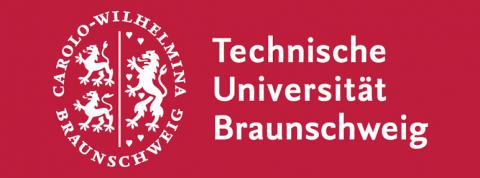In the MOONRISE project, the team of scientists from the Institute of Space Systems (IRAS) at the Technical University of Braunschweig and the Laser Zentrum Hannover e.V. (LZH) have succeeded in both melting regolith under lunar gravity and "printing" joint lanes.
At the end of the two-year project funded by the Volkswagen Foundation, laboratory experiments were carried out with the MOONRISE laser on the IRAS rover's robot arm. The scientists succeeded in melting moon dust into joint lanes. The robot arm controlled the laser head from the LZH, similar to how it could be used on the moon in the future.
Robust, small laser and moon-like regolith
"In the last two years, we have developed a laser head that is only about the size of a large juice box and yet can withstand the adverse conditions in space," reports Niklas Gerdes, a scientific employee of the LZH, about the laser, which has already withstood the necessary temperature-vacuum and vibration tests. Niklas Gerdes summarises the next steps: "During the first tests in the laboratory, we determined the necessary irradiation duration and laser power. Then we went into the vacuum chamber and successfully melted regolith there." The regolith used in the project comes from IRAS. Throughout the project, the regolith's composition the IRAS scientists adapted it to the landing site's expected conditions – a challenge that should not be underestimated. After all, the scientists have to find suitable materials on Earth based on data from past lunar missions to reproduce the lunar dust as accurately as possible.

For the first time, lunar dust could be melted under lunar gravity using the laser.
(Photo: LZH/LUH/IRAS - HITec)
Unique in the world: Regolith melted
under lunar conditions in the Einstein Elevator
A highlight were the experiments in the Einstein-Elevator at Leibniz University Hannover (LUH). MOONRISE was the first-ever scientific experiment in the elevator. Prof. Dr.-Ing. Ludger Overmeyer, LUH/LZH, is still thrilled: "In the Einstein Elevator, we succeeded in melting regolith into spheres – both under complete weightlessness and under lunar gravity. That is unique in the world!"
A grand finale was the use of the laser on the IRAS rover MIRA3D. MIRA3D consists of a mobile platform and a robot arm and is used to develop additive manufacturing technology on the Moon. Prof. Dr.-Ing. Enrico Stoll from IRAS, TU Braunschweig, reports: "We were able to precisely control the laser head on the arm of the rover and thus melt larger structures precisely. A complete success! Together with the experiments in the elevator, we have a solid basis for 3D printing with the laser on the Moon."
The next milestone after the project would be to develop the laser head into a flight model. LZH and IRAS are currently in talks with relevant agencies to push ahead with the developments. After all, with MOONRISE, the scientists have taken a big step closer to the vision of a laser that could print building materials for entire settlements from lunar dust.
About MOONRISE
The Volkswagen Foundation supported the ambitious and future-oriented research project within the now completed “Off the Beaten Track" funding initiative. The foundation supports extraordinary and daring projects for which no other financing can be found. The MOONRISE film depicts the idea behind the project and the progress.
Laser Zentrum Hannover e.V. (LZH)
As an independent, non-profit research institute, the Laser Zentrum Hannover e.V. (LZH) stands for innovative research, development and consulting. The LZH is supported by the Niedersachsen Ministry of Economic Affairs, Employment, Transport and Digitalisation and is dedicated to the selfless promotion of applied research in the field of photonics and laser technology. Founded in 1986, almost 200 employees are now working for the LZH.
The focus of the LZH lies on the fields of optical components and systems, optical production technologies, and biomedical photonics. Interdisciplinary cooperation between natural scientists and mechanical engineers makes innovative approaches to challenges from the most different areas possible: from the development of components for specific laser systems to process developments for the most diverse laser applications, for example for medical technology or lightweight construction in the automotive sector. Eighteen spin off companies have emerged from the LZH up to now. Thus, the LZH has created a strong transfer between fundamental science, application oriented research, and industry.
About the Institute of Space Systems (IRAS) of the TU Braunschweig
Research at the Institute of Space Systems (IRAS) focuses on developing methods, technologies and approaches for the sustainable use and safety of space infrastructure. Three technical working groups research the fields of exploration and propulsion systems, space debris and satellite technology. A fourth AG Culture and Space explores societal and historical concepts of integrating risk and security into the space ethics.
With more than 20,000 students and 3,700 employees, the Technische Universität Braunschweig is the largest technical university in Northern Germany. It stands for strategic and performance-oriented thinking and acting, relevant research, committed teaching and the successful transfer of knowledge and technologies in business and society. Research focuses on mobility, infections and drugs, metrology and city of the future.
Partner


